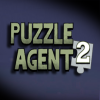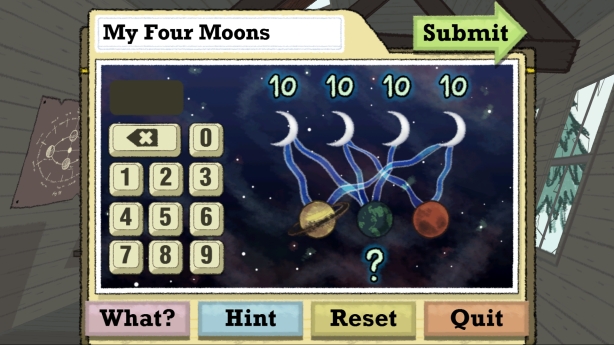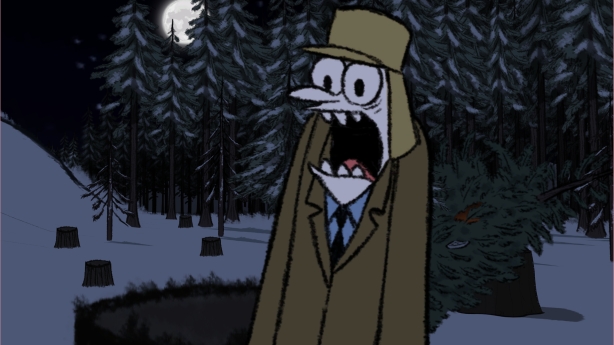Puzzle Agent 2 Review
Developer: Telltale Games
Publisher: Telltale Games
Available on: Windows PC. Mac, iPad, iPhone (PC Version Reviewed)
When the Professor Layton series of games first made its way across from Japan, it caused a stir throughout both the casual and core gaming markets. Chock-full of inventive brainteasers, but also equipped with engrossing storylines, top-notch graphics and an interesting cast of characters, the games captured the imagination of many players. In 2010, Telltale Games looked to capitalise on the success of these puzzle games with a puzzling adventure of their own. So Puzzle Agent was born. An adventure that was heavily puzzle based, and that was centered around the comic-book creations of Graham Annable. The game was a sleeper success and its quirky, small town America based mystery stood out from the crowd. Now Telltale Games have released Puzzle Agent 2, which continues directly from where the first game left off, how will the follow-up match-up?
STORY: Whilst the game does indeed pick up right from the end of the last game, there is a built in journal that contains a quick recap of what happened in the first Puzzle Agent. This is quite brief, but the game does retread what happened previously as well, so it shouldn’t be too hard for new players to adapt.
You take control of Nelson Tethers, the only Agent in the Puzzle Division of the FBI. After a series of strange events, the first game sees Nelson assigned to a case in the fictional town of Scoggins, Minnesota. You investigate the disappearance of the foreman from the local Eraser factory (which is the official Eraser supplier to the White House), Isaac Davner. During your case, you find out that nothing is what it seems in Scoggins. The Townsfolk are obsessed with puzzles, there is a sinister “Brotherhood of Scoggins” and many of the locals claim to have spotted a group of small Gnomes that they call the “Hidden People”. After managing to re-open the Eraser factory in the first game, Nelson is taken off the case by his superiors and the case closed. However, Tethers still feels he owes it to himself to go back, find Isaac Davner and solve the mystery once and for all.
This is where we join the second game. If you hadn’t already guessed, very strange things are happening in Scoggins. When Nelson Tethers arrives back, it seems as if there is a cover-up operation going on, and he finds it harder than ever to get any help from the locals. But persevere, and the adventure leads you and Nelson on a hunt for clues that spirals out of control, and reveals a huge conspiracy to uncover. The game plays like a humorous and perhaps even stranger Twin Peaks. Playing as the typical lone agent, working against a town of unhelpful locals, it seems like a well-trod path. Being a Telltale Game though, this title is largely played for laughs, despite quite an eerie atmosphere that prevails throughout. All of the characters have strong personalities and are well developed, all feeling like they could be players in a movie or television series.
However, the downfall of the game is that as the conspiracy is revealed and all of the different threads of the case start to be woven together, the plot spirals somewhat out of control. The different elements are all bunged together in short order, in an attempt to make sense of all of the outlandish occurrences experienced in the games. This does result in it all feeling a bit rushed and somewhat forced, whereas the first game perpetuated an overall sense of mystery, without straying too far into ridiculousness, or at least only when it was intentional. Had the game been a little longer and more attention been paid to tying up all of the loose ends, the game would certainly feel more rewarding.
GRAPHICS: The graphical style may not seem immediately impressive, but being that it is based on the illustrations featured in a comic book, they are bound to be stylised. In fact, if you compare the work of Graham Annable (featured in his “Grickle” comics) to Puzzle Agent 2, you will see that the game is a faithful rendition of his work and signature style. The rough black outlines to the characters and their simple, Simpsons-like faces are very expressive, and full of character. The animation too, fits in with the minimalist, sketchy aesthetic. Animated with some missing frames, the whole game plays more like a long-forgotten Eastern European political cartoon. None of the main action is missed, but the inbetween frames that aren’t necessary are often omitted.
This style runs through every aspect of the game; into its puzzle design and presentation, and down to the text on-screen and speech bubbles. The artistic vision for the game is very strong, whilst fitting perfectly with the surreal, slightly deranged plot and events contained within. You get the feeling that this really is a town gone slightly mad, driven insane by the strange events and mysterious crimes that have been committed lately.
SOUND: This tension and insanity is drawn out further through the creepy sound effects and the music that keeps you on the edge of your seat. Town residences and the Moose Ear Diner are all accompanied by typical small-town “elevator” type music which is inoffensive, but portrays the idea that this is a small, sleepy town. This is in contrast to the outdoor and mysterious locations, where dramatic and suspenseful music is used to reinforce the feeling of unease. Strange sound effects and noises that play in the background at certain times only help to make you feel more worried, and cements Scoggins, Minnesota as a spooky place to be.
It must be said that at times, the balance between music and other audio is a bit off, with it often being difficult to distinguish voices over the oppressive volume of the soundtrack. Conversely, at times the voices and sound effects are played at an incredibly loud level, leaving you to wonder who signed off on the audio mix for the game. This is a shame because the vocal work in the game is so strong. Being Minnesota, many of the residents have a slight Scandinavian twang to their names and accents, and this works perfectly, further creating a weird feeling that you are an alien in a new and confusing world. The insanity in the voices of the affected residents is also very well handled. Never veering too far into comedy madness, the ramblings and incoherent mumbles of the deranged really add to the atmosphere that has been created.
GAMEPLAY: The game is controlled, on the whole, like a standard point and click adventure. The mouse (or your finger in iOS versions) controls the cursor, which interact with the world around you. Click at a certain point on the screen and a ripple effect spreads out for an inch or so radius, showing what hotspots there are to interact with in the vicinity. This is a great mechanic, as it hugely reduces the amount of random clicking and pixel-hunting you will have to go through in the game in order to find objects of interest. These objects will generally be something to examine (magnifying glass), people to speak with (speech bubble), puzzles to solve (jigsaw piece), or wads of gum. Gum is your resource for acquiring hints for the puzzle sections.
Conversations are handled with a list of different topics that you can choose from, to ask different questions to the locals. These will often give you new clues or advice on how to proceed next, or will sometimes lead to a new puzzle to be solved before you can progress further. Puzzles make up the bulk of the game, and these are generally logic based puzzles, similar to those you might find in Professor Layton games. For example, one puzzle gives you a list of six guests and a picture of six hotel rooms, and you must arrange the guests according to a list of rules to follow. Another puzzle is the often imitated river puzzle, where you must transport a series of animals over a river, without them eating one another.
Sound familiar? Unfortunately they very well might, as the game does suffer somewhat from a lack of imagination in its puzzles. They are all very derivative of one another, and very similar to puzzles seen in the first Puzzle Agent. Too many puzzles are re-used later in the game, simply with a different maze layout, and this does mean that there is a distinct lack of variety shown. The puzzles do try to tie in with the story as it goes along, such as when you must sneak out of your hotel room and are presented with a sliding tile puzzle which requires you to arrange your room furniture in a way that it blocks all windows and allows for your escape. The game actually succeeds much better than the first Puzzle Agent in making the puzzles relevant, as too many puzzles in the first game had nothing to do with the situation you were in, whereas many in the sequel do.
When completing a puzzle, you can opt to use up the pieces of gum you collect from around the town, which provide hints. Three pieces of gum may be used for each puzzle and all of the hints can then be reviewed. These hints do get progressively more helpful, and will aid thoise who get terribly stuck, but most of the puzzles aren’t too hard. After submitting your answer for a puzzle, you will be marked accordingly from A-F, receiving deductions based on the number of hints used and the amount of wrong answers you gave before finding the correct one. This generally makes no difference to the game, except for providing a feeling of satisfaction if you score highly. Upon completion of the game, players will be rewarded with bonus puzzles to solve. One of these will remain unlocked unless you have completed all puzzles in the main game, achieving full marks. This secret bonus puzzle is fiendishly hard, and a fitting reward for being such a puzzle-solving whizz.
LONGEVITY: For what is a budget release, you wouldn’t expect a particularly long play-time. The game will most likely take you around three-four hours to complete fully, and after that the bonus cases will likely only keep you busy for a short time longer. If you took out all of the cutscenes and conversations from the game, the length would be considerably shorter, showing that you won’t actually spend a huge amount of time solving puzzles during the game, but the story progression is amusing enough to make this a fairly even balance between story and gameplay. If you wanted to go back and attain full marks, in order to unlock the bonus puzzle, the game would of course last you a whole lot longer, but there isn’t much incentive to do this, and if you didn’t already know there was a reward for doing this, there is nothing in the game to indicate this fact, so most gamers will simply miss this and only play the game once.
VERDICT: This title certainly won’t keep you busy for days on end, and the puzzles included within won’t astound you or seem particularly ingenious. It is the setting and the world created that will keep you entertained though, making you want to carry on playing, in order to solve the mystery of Scoggins and find out just what on earth the “Hidden People” are up to. The story goes off the rails a little as it wraps up, but it is intriguing enough to propel the game forward at quite a good pace. You are unlikely to put the game down for long, due to the call of the weird, but unfortunately it’ll all be over far too soon. A Puzzle Agent double pack, combining both games would be a good idea, but at such a low price, gamers can hardly scoff at this charming and creepy little adventure. Warm up your little grey cells and put on your investigating hat, the case is afoot.










